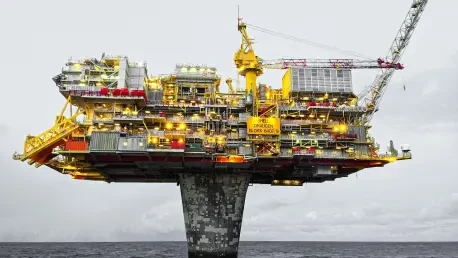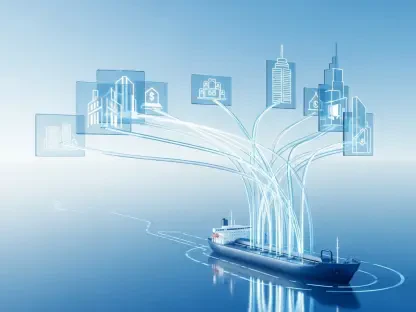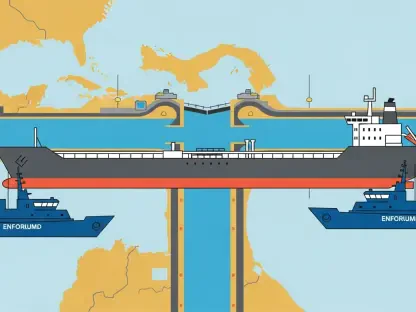Imagine a vast, uncharted frontier beneath the ocean’s surface, holding untold treasures of critical minerals vital for renewable energy technologies, yet shrouded in mystery with less than 30% of the seafloor even mapped, creating an urgent need for caution. This is the reality facing the United States as the federal government pushes to accelerate deep-sea mining in federally managed waters, particularly near American Samoa. The drive to extract polymetallic nodules and other resources from the ocean floor is fueled by strategic and economic imperatives, but it comes with profound risks due to a staggering lack of scientific understanding and outdated regulatory frameworks. The potential for environmental devastation, cultural disruption, and economic fallout looms large if this rush proceeds without robust oversight. This pressing issue demands a closer look at the gaps in knowledge, the inadequacies of current regulations, and the urgent need for a cautious, balanced approach to ensure that the pursuit of resources does not come at an irreversible cost to the planet and its communities.
Uncharted Depths and Unknown Risks
The deep ocean remains one of the least understood regions on Earth, with only a tiny fraction visually explored and countless species likely still undiscovered. Scientists emphasize that the seafloor plays a crucial role in regulating global climate, storing carbon, and supporting marine biodiversity, yet the impacts of mining on these processes are largely unknown. The haste to extract critical minerals from this environment raises serious concerns about disrupting ecosystems that may take millennia to recover. Without a comprehensive baseline of data, any mining activity risks triggering cascading effects that could alter ocean health and, by extension, global environmental stability. The case of American Samoa, where local concerns over marine ecosystems and subsistence practices led to a moratorium on mining, underscores the stakes. Federal plans to push forward with lease sales in such regions, despite these unknowns, highlight a dangerous disconnect between ambition and readiness that could lead to irreversible harm if not addressed with rigorous scientific study.
Moreover, the lack of knowledge extends beyond ecology to the practical challenges of deep-sea operations. Mining at extreme depths involves untested technologies that could fail or cause unintended damage, with no clear protocols for mitigation. The sheer scale of the U.S. Outer and Extended Continental Shelf, spanning 3.2 billion acres, adds another layer of complexity, as monitoring and responding to incidents over such vast distances is a logistical nightmare. Current scientific efforts to map and study the seafloor are woefully underfunded and slow, meaning that decisions are being made in the dark. This gap in understanding not only threatens the environment but also jeopardizes the safety of operations and the communities that depend on the ocean. A more deliberate approach, prioritizing research and data collection before any extraction begins, is essential to avoid a scenario where short-term gains lead to long-term disasters that no amount of cleanup can rectify.
Regulatory Gaps and Oversight Challenges
The regulatory framework governing deep-sea mining in the United States is alarmingly outdated, originally designed for oil, gas, and sulfur extraction rather than novel mining techniques. Agencies like the Bureau of Ocean Energy Management (BOEM) and the Bureau of Safety and Environmental Enforcement (BSEE) oversee vast ocean territories, yet their rules for mineral extraction are vague and untested for the unique challenges of the deep sea. Key questions remain unanswered: How will collaboration with indigenous groups be ensured? What royalty rates and environmental protections will be imposed? How will operator expertise be verified, or financial assurances for cleanup be guaranteed? Emergency standards and inspection protocols for remote ocean areas are also unclear. Recent staff reductions at these agencies further erode their capacity to manage such a complex endeavor, raising the risk that oversight will be insufficient when it is needed most.
Compounding these issues is the current trajectory of federal policy, which appears to favor speed over safety by streamlining already weak regulations to expedite leasing. This approach ignores the lessons from past environmental mishaps in other industries, where inadequate rules led to catastrophic outcomes. The push for a first-of-its-kind lease sale near American Samoa, despite local opposition and insufficient data, exemplifies this reckless pace. Historical decisions to reject such requests due to the need for community input and better information have been sidelined under new administrative priorities. Without modernized regulations that address the specific risks of deep-sea mining, there is a real danger of setting a precedent that prioritizes economic gain over environmental and cultural responsibility. Strengthening oversight mechanisms, ensuring adequate funding for regulatory bodies, and mandating thorough impact assessments are critical steps to prevent a rush to the ocean floor from becoming a race to disaster.
Balancing Economic Goals with Environmental Responsibility
The pursuit of critical minerals from the deep sea is driven by legitimate economic and strategic needs, as these resources are essential for technologies like batteries and renewable energy systems. Global competition for such materials adds pressure on the United States to secure domestic supplies, reducing reliance on foreign sources. However, this ambition must be weighed against the potential for environmental destruction and cultural harm, especially to communities like those in American Samoa who depend on the ocean for their livelihoods. The tension between development and conservation is evident, with industry stakeholders advocating for rapid progress while local governments and environmentalists call for caution. Striking a balance requires a framework that ensures mining, if it occurs, is conducted with the highest standards of safety and sustainability, protecting both the ocean’s delicate ecosystems and the rights of affected populations.
Furthermore, the financial implications of inadequate oversight cannot be ignored. If environmental damage occurs due to rushed or poorly regulated mining, taxpayers could bear the burden of cleanup costs, while companies may escape accountability without strict financial assurances in place. The absence of clear guidelines for royalties and revenue sharing also risks shortchanging the public, particularly indigenous groups whose resources are at stake. A responsible approach would integrate economic goals with stringent safeguards, ensuring that any benefits from deep-sea mining are not overshadowed by long-term losses. This means pausing lease sales until scientific data is robust, regulations are updated, and community input is genuinely incorporated. Only through such a measured strategy can the United States avoid repeating historical mistakes where resource extraction led to ecological and social fallout that took decades to address.
Charting a Safer Path Forward
Reflecting on the trajectory of deep-sea mining, it becomes evident that the rush to exploit the ocean floor has often outpaced the necessary precautions. The warnings about insufficient scientific knowledge and outdated regulations have been repeatedly raised, yet federal actions frequently lean toward expediency rather than caution. The resistance from communities like those in American Samoa, who see their way of life threatened, serves as a stark reminder of what is at stake. Looking back, the decisions made during this pivotal period underscore the consequences of proceeding without a solid foundation of data and oversight, revealing how much damage could have been avoided with a more deliberate pace.
Moving ahead, the focus must shift to actionable solutions that prevent past oversights from recurring. Prioritizing comprehensive seafloor mapping and ecological studies over the next few years, starting now, offers a way to build the knowledge base needed for informed decisions. Updating regulatory frameworks to address the unique challenges of deep-sea mining, alongside bolstering agency resources for enforcement, stands as a non-negotiable step. Engaging with indigenous and local communities through meaningful consultation ensures their voices shape the process. These measures, while time-intensive, pave the way for a future where resource extraction, if pursued, aligns with environmental stewardship and social equity, setting a global standard for responsible ocean management.









